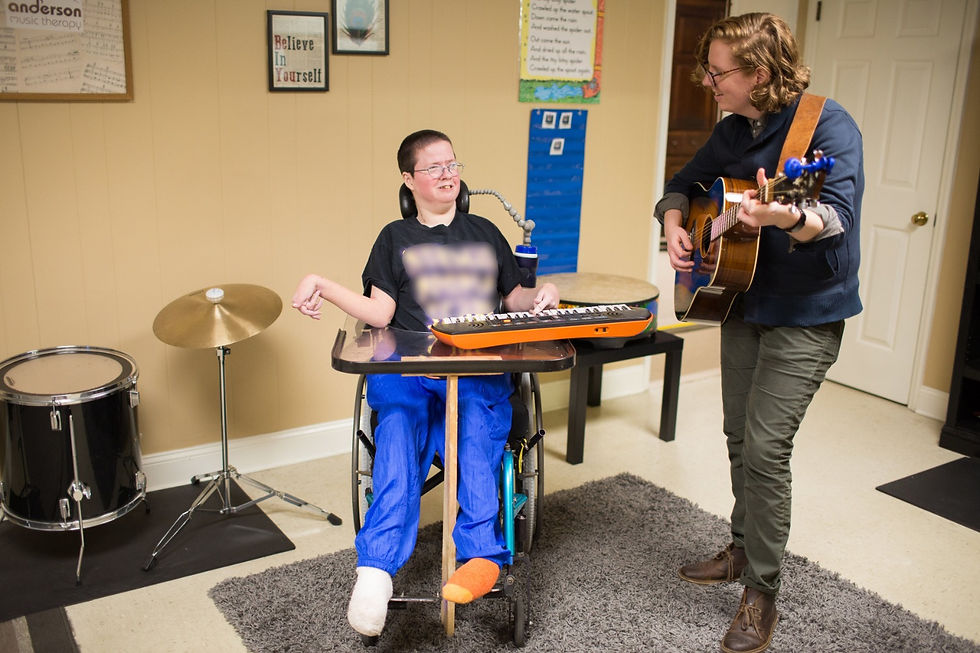What Goes on Inside a Music Therapist's Head?
- Noel Anderson, MMT, MT-BC

- Jan 4, 2019
- 2 min read
Updated: Oct 15, 2024
Have you ever noticed how two people can observe the same scenario and see two completely different things???
Imagine this scene...
Person 1:
There was a huge eruption of water, like a volcano! Everyone was yelling and running to get out of the way.
Some people looked scared, but others were excited and started laughing.
Person 2:
The kids gathered around while the firefighter released the valve on the fire hydrant. A ton of the kids laughed and shouted in excitement! They couldn't wait to play in the water!

These two perspectives come from a child (person 1) and an adult (person 2).
Both observed the same situation. Both had an accurate description, and both are right in what they described.
They simply saw it differently based upon their
own past experiences and knowledge.
Being a music therapist is kind of like this!
We see all the "little things" happening in the music.
Most everyone sees the positive effects of music when we have a music therapy session. They note the increased attention, improved communication, and of course the joy on the participants' faces.

Music therapists see these things as well as other small nuances, such as the tapping toes of a resistant client, the improved rhythmic patterns signifying improved cognition, and the increased eye gaze according to the music chosen...
We hear the vocalizations of non-verbal clients, that imitate the lyrics both in rhythm and melody...and so much more!
Music therapists are specifically trained to use music to help people grow in a number of areas, throughout our college degree and clinical training, including;
1. Communication
2. Social skills
3. Emotional regualtion/expression
4. Cognition (like executive functioning and attention skills)
5. Motor skills
We also see music and all its aspects (rhythm, dynamics, tempo, timbre, melody, etc.) as therapeutic components.
Consider how different songs make you feel.
Slower songs may make you feel calm or even anxious if they're too slow. Faster songs can create a feeling of excitement, increased energy, or again, anxiety or overstimulation.

Music therapists pay close attention to these musical elements and our client's responses, to help them:
1) Maintain regulation so they are in an optimal place to learn
2) Meet their pre-determined therapeutic goals
So, are you ready to get a peek inside a
music therapist's brain?!
Watch this video to see a real music therapy session and hear some of my thoughts as I'm working.
PS- You don't want to miss the end of the video! You'll see why! :)
If you'd like to share your thoughts, insights, or questions on the video or music therapy feel free to share below.
If you're curious about how music therapy could support your child's growth, schedule a FREE chat with me today!
I'm looking forward to talking with you!
#musicmaking #musictherapy #autism #expressivecommunication #developmentaldisability #socialskills #cerebralpalsy #about #aboutus #melody #specialneeds #vocalize #emotionalregulation #followingdirections #improvisation #generalization #livemusic #attention #communication #dynamics #musicispower #transitions #selfregulation #executivefunctioning #overstimulation #development #impulsecontrol #expressivelanguage #nonverbal #rhythm #signlanguage





